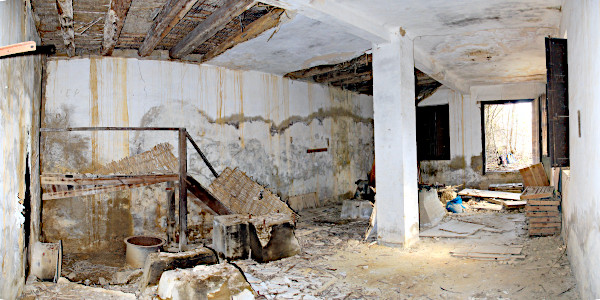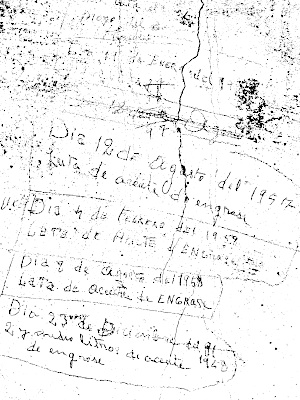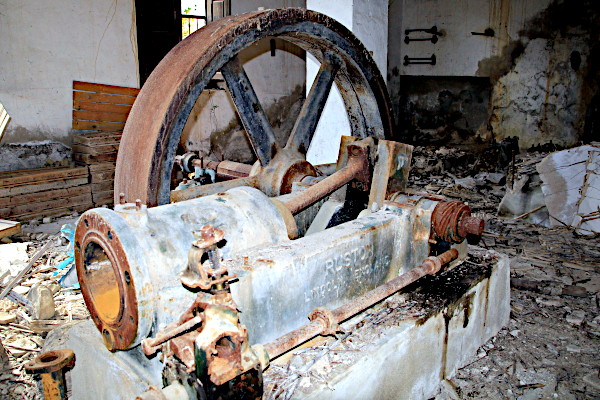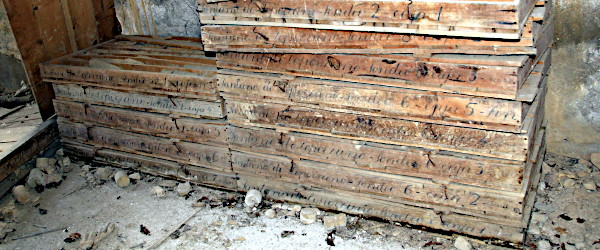
Loporzano

Pictures: 03.iii.2019


Pictures: 03.iii.2019
| Molino harinero | Central eléctrica |

From the wall at the back, and from the floor two tubes are protruding and showing the place of a turbine.
The roof and walls are severely affected by penetrating moisture. As in many other mills, the white plaster of the walls has also been used as a scratch pad. Some scribbles are still legible.



Loporzano — Huesca
Central Eléctrica de Palacin
The mill is often mentioned as molino (de) Palacin
, referring to its owner José María Palacín.
I don't know when exactly he became owner. There certainly must have been earlier owners: see (2) where a Sebastián Bescós
is named. The site was the theater of fierce fighting during the Civil War.

??? lata de ???
Mayo del año 1956
Día 19 de Enero del 19??
????
Día 12 de Agosto del 1957
Lata de aceite de engrase
Día 4 de Febrero del 1958
Lata de Aceite de ENGrase
Día 8 de Agosto del 1958
Lata de Aceite de ENGRASE
Día 23 de Diciembre del 1958
2 y medio litros de aceite de engrase
It probably concerns the diesel engine, which is the only device that has not yet been completely dismantled (14).


Pantano de Loporzano – sondeo
Pantano de Loporzano – sondeofollowed by the number of the probe and then the word
cajaand the sequence number of this box within the same probe.
The samples undoubtedly date from the period 1964–1967 when soil drilling was done here for the construction of a new dam on the Río Flumen (†).
Finally a site was chosen about 2 km as the crow flies north of the mill. Work on the dam started in 1993. They encountered many problems that required repeated interruptions of the work. The costs were skyrocketing.
| Molino harinero | Central eléctrica |